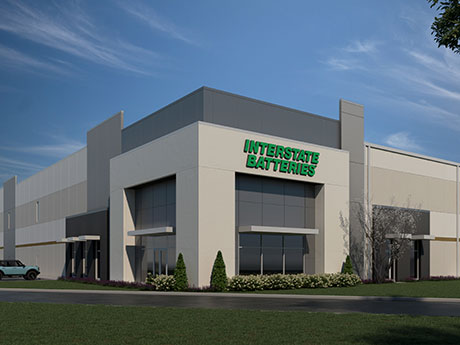By Dan Wendorf, JLL
The industrial landscape in Columbus is not just thriving — it’s breaking records. As highlighted in JLL’s fourth-quarter 2023 Columbus Industrial Insights Report, 2023 marked another milestone year for the market. With over 19 million square feet under construction and surpassing 2022’s nearly 7 million-square-foot total, Columbus has solidified its position as a national industrial hub.
The report also showed total vacancy increased 3.8 percent year over year due to 15.7 million square feet of speculative completions, which finished the year at 30 percent leased. Although a modest uptick, Columbus continues to diversify its industrial scene from exclusively being known as once a “logistics and parcel delivery hub” to now being recognized for its growth in advanced manufacturing and data centers.

As exemplified by investments from Facebook, Google and Meta, the market has evolved into a multifaceted industrial powerhouse. In particular, investments in microchip factories have stimulated the need for additional warehousing from suppliers, and this trend is expected to continue in the coming year.
This article explores how Columbus has become a key player in industrial development, factors motivating businesses to move their operations to central Ohio and what’s in the pipeline to keep an eye on this year.
Columbus advantages
How did Columbus ascend so quickly in the national industrial commercial real estate landscape? The answer lies in its strategic location and business-friendly environment, paired with the ability to secure land and put development in place. Columbus offers accessibility for companies seeking to streamline their distribution networks as they can reach 65 to 70 percent of the U.S. population within a single day’s truck drive. The region’s affordability, commitment to renewable energy and robust talent pool further enhance its appeal to investors and businesses alike.
Other recent investments from Amazon, Honda, Intel and Microsoft affirm Columbus’ reputation as a destination for industrial expansion. This demand is being propelled by affordability, diversification, notable investments in solar energy and electric vehicles, and talent and quality infrastructure, such as access to water, cargo airports, commercial ports and major rail yards.
As reported by the U.S. Bureau of Labor Statistics, Ohio’s manufacturing workforce ranks third in the country, with more than 13,000 engineers and engineering technicians graduating from over 50 state campuses annually.
Moreover, the Ohio Manufacturing Association, JobsOhio and state agency stakeholders are coordinating STEM initiatives across the state to deliver the manufacturing talent to support today’s needs and tomorrow’s demands. The market’s overall appeal as a prime business location reflects its robust workforce and pro-business economic policies, like the Ohio Job Creation Tax Credit and the Data Center and Manufacturing Tax Exemptions.
These strategic commitments not only signal confidence in the region’s economic vitality but also create a ripple effect, generating opportunities for small and midsized manufacturing businesses and suppliers to support these companies with the products they need.
Looking ahead
While 70 percent of the speculative square footage completed in 2023 remains available, current tenant demand suggests absorption levels will increase throughout 2024, according to the fourth-quarter 2023 report. Particularly noteworthy is the potential within the Class B segment, where well-located buildings with lower clear heights present attractive opportunities for smaller investors looking to capitalize on the market’s growth trajectory.
Additionally, the global trend of onshoring and reshoring is poised to further bolster the Columbus industrial sector. As more industries seek North American-based suppliers to streamline their supply chains, Columbus’ strategic positioning and logistical advantages make it an ideal destination for businesses looking to navigate the complexities of sustained e-commerce growth. To meet the demands of same-day/next-day delivery expectations, there will be an increased need for urban logistics facilities located closer to major population centers.
Overall, the market provides a healthy balance of demand and a lot of opportunity — communities have grown and benefitted from the region’s industrial boom and this trend is likely to continue. Columbus’ industrial real estate market growth presents a compelling narrative of growth, opportunity and resilience.
As we look to the future, central Ohio’s industrial momentum, coupled with its strategic advantages and diversified industrial sectors served beyond just logistics, positions it as a strong option for investors and businesses seeking to thrive in an ever-evolving market.
Dan Wendorf is an executive managing director with JLL. This article originally appeared in the April 2024 issue of Heartland Real Estate Business magazine.


